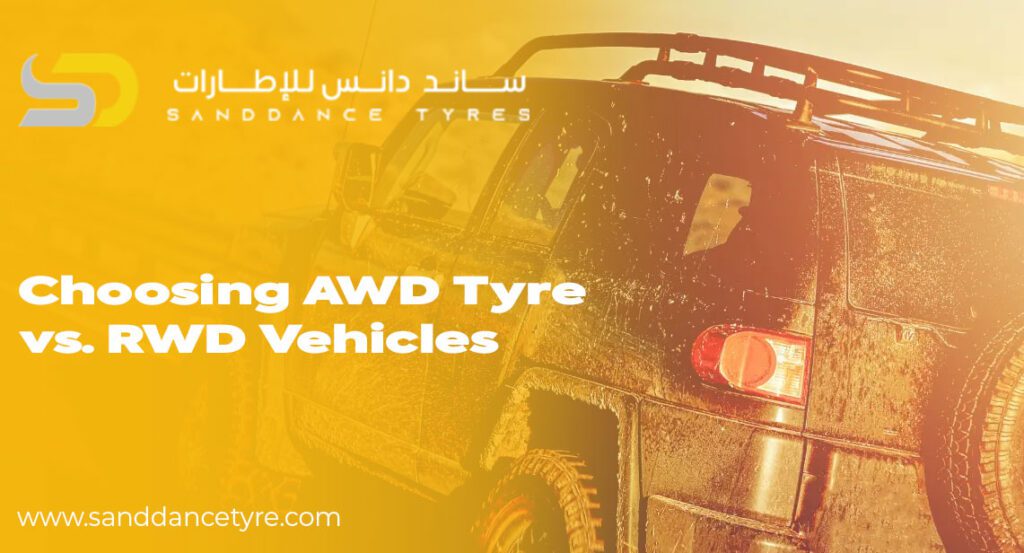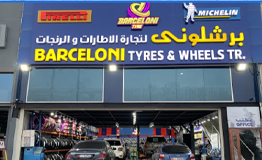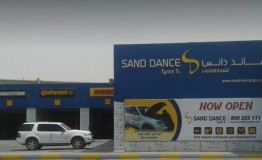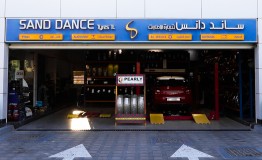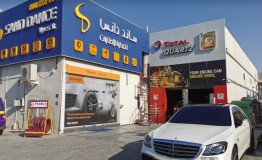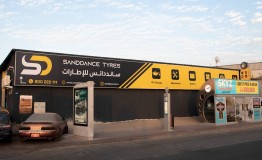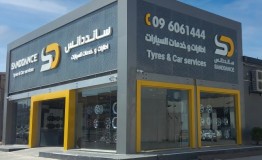When it comes to purchasing tires for your vehicle, you have an AWD or RWD system to determine. The dynamics of AWD tyres vs rear wheel tires play a role in performance and handling, and also tire wear. In the UAE, which has a variable climate from hot highways to off-road dunes, we see that based on your vehicle’s drive train choice, you can see great differences in safety and comfort. This guide is to help you out in identifying the differences and in choosing tires that best fit your vehicle’s performance needs.
What is the Difference Between AWD tyre and RWD Vehicles?
All wheel drive cars put out power to all four wheels at the same time or on demand, which in turn provides better traction in slippery or rough conditions. On the other hand, rear wheel drive cars transfer power through the rear axle, which may present a sportier, more responsive ride on dry roads. That which tires wear out, how the car handles during acceleration, and how power is distributed to the roads play a role. This is very much the case in the UAE, which sees a transition from smooth asphalt to sand or rough terrain very commonly.
How AWD Affects Tyre Requirements
AWD systems depend on equal traction from all four tires, which means that uneven wear or different tire sizes will disrupt the drivetrain’s balance. As you choose AWD tires, opt for consistency. All tires should, if possible, be from the same brand and model and wear level to avoid putting stress on the drivetrain. In the UAE, which sees the use of AWD vehicles for city traffic and also desert conditions, drivers must pay special attention to tire rotation and regular checks to maintain even wear.
Tyre Choices for RWD Cars in Dry and Urban Conditions
Rear wheel drive cars, which are common in performance sedans and sports cars, present a different sort of drive experience, which is tuned toward rear traction and quick handling. Tyre size and tread for RWD cars may differ between the front and rear axles. In the UAE, which has mostly dry and well-paved roads, RWD tires have to balance between strong rear traction and front-end control. Summer tires with high grip ratings do well on RWD cars, in particular for high-speed driving in Dubai and Abu Dhabi.
Handling and Traction Distribution in AWD vs. RWD Tyres
In AWD systems, what we see is that all tyres play a role in power transfer, which in turn means even wear of tire treads and better grip from all wheels. In RWD vehicles, it is the rear tires that see most of the power, which results in them wearing out faster. This is the reason for the different maintenance schedules between AWD and RWD systems. AWD tires require balanced wear; RWD tires see more frequent need for rear tire changes or front-to-back rotations.
Tyre Pressure and Alignment Needs by Drivetrain Type
Both AWD and RWD vehicles benefit from routine tire alignment and proper pressure settings. We also see that AWD systems do it to a greater degree. What we mean is that a small change in air pressure can cause great wear or drivetrain issues. Also, in the case of RWD cars, they put more stress on the rear tires, which in turn may require different PSI for best performance. In the UAE, we advise that drivers pay attention to tire pressure, which also includes the variables of road heat, vehicle load, and which type of drive train you have.
What Happens When Tyres Are Mismatched on AWD Vehicles
Mismatching tyre brands, models, or even tread depths is particularly damaging to AWD cars. These systems are put in place for precise performance, and even small differences in handling type or rolling diameter will cause drivetrain stress. Over time, this results in mechanical damage, higher fuel consumption, and uneven handling. That’s also true for full set tyre replacement on AWD vehicles, which should be performed at the same time, not in isolated single or pair changes.
Choosing Tyres for Performance vs. Utility
If you own a car that has All Wheel Drive, which is used for off roading or utility, you will see that your tire requirements will differ from that of a Rear Wheel Drive sports car. AWD SUVs and 4x4s may do best with reinforced sidewalls, deep tread, and off-road traction designs, at the same time RWD sedans may do better with performance-focused tires that have short braking distances. Sanddance Tyres helps UAE drivers choose the right tires based on what type of car they have, what they use the car for, and the terrain.
Read More: What to Know About Tyre DOT Codes?
Bottom Line
Understanding what sets APW tires apart from the ones used in RWD cars will greatly improve your driving experience in the UAE’s tough climate and road conditions. Tyres do not fit all vehicles. What you put on your car should be based on its drive type for best results, which includes better traction, improved handling, and extended tire life. At Sanddance Tyres, we provide personal tire recommendations and installation services for your specific make and model, as well as your particular style of driving.
Frequently Asked Questions
Do AWD vehicles require all four tyres to be the same?
Yes, with AWD systems, it is required that all four tires be of the same brand, model, and wear level to ensure even traction, and we also avoid drivetrain damage.
Can I put on the same tire rotation for AWD and RWD vehicles?
No, rotation patterns will vary. For AWD vehicles tires should be rotated more often and in a cross pattern, also in RWD front to rear rotation is typical.
Do AWD tires wear out faster than RWD tires?
AWD tyres tend to wear more evenly across the set but may do so at a faster rate, which is a result of constant power flow. In RWD cars, we see greater wear on the rear tyres.
Is proper tire alignment a bigger issue for AWD cars?
Yes, I would say that proper tyre alignment is a must for AWD cars, which in turn will prevent issues related to imbalance.
Which tires are best for UAE roads in AWD vehicles?
High-performance all-season and desert-rated all-terrain tires are the best for AWD vehicles in the UAE, which also include a mix of on and off-road use.


